Frozen Vegetables
Frozen Fruits
Frozen Meat
Frozen Fish
Frozen Ready Meals
Supermarkets
Hypermarkets
Convenience Stores
Online Retail
Specialty Stores
Household
Food Service
Retail
Bags
Boxes
Cartons
Cans
North America
Europe
South America
Asia Pacific
Middle East and Africa
North America Outlook (USD Billion, 2019-2035)
North America Frozen Foods Market by Product Type
Frozen Vegetables
Frozen Fruits
Frozen Meat
Frozen Fish
Frozen Ready Meals
North America Frozen Foods Market by Distribution Channel Type
Supermarkets
Hypermarkets
Convenience Stores
Online Retail
Specialty Stores
North America Frozen Foods Market by End User Type
Household
Food Service
Retail
North America Frozen Foods Market by Packaging Type
Bags
Boxes
Cartons
Cans
North America Frozen Foods Market by Regional Type
US
Canada
US Outlook (USD Billion, 2019-2035)
US Frozen Foods Market by Product Type
Frozen Vegetables
Frozen Fruits
Frozen Meat
Frozen Fish
Frozen Ready Meals
US Frozen Foods Market by Distribution Channel Type
Supermarkets
Hypermarkets
Convenience Stores
Online Retail
Specialty Stores
US Frozen Foods Market by End User Type
Household
Food Service
Retail
US Frozen Foods Market by Packaging Type
Bags
Boxes
Cartons
Cans
CANADA Outlook (USD Billion, 2019-2035)
CANADA Frozen Foods Market by Product Type
Frozen Vegetables
Frozen Fruits
Frozen Meat
Frozen Fish
Frozen Ready Meals
CANADA Frozen Foods Market by Distribution Channel Type
Supermarkets
Hypermarkets
Convenience Stores
Online Retail
Specialty Stores
CANADA Frozen Foods Market by End User Type
Household
Food Service
Retail
CANADA Frozen Foods Market by Packaging Type
Bags
Boxes
Cartons
Cans
Europe Outlook (USD Billion, 2019-2035)
Europe Frozen Foods Market by Product Type
Frozen Vegetables
Frozen Fruits
Frozen Meat
Frozen Fish
Frozen Ready Meals
Europe Frozen Foods Market by Distribution Channel Type
Supermarkets
Hypermarkets
Convenience Stores
Online Retail
Specialty Stores
Europe Frozen Foods Market by End User Type
Household
Food Service
Retail
Europe Frozen Foods Market by Packaging Type
Bags
Boxes
Cartons
Cans
Europe Frozen Foods Market by Regional Type
Germany
UK
France
Russia
Italy
Spain
Rest of Europe
GERMANY Outlook (USD Billion, 2019-2035)
GERMANY Frozen Foods Market by Product Type
Frozen Vegetables
Frozen Fruits
Frozen Meat
Frozen Fish
Frozen Ready Meals
GERMANY Frozen Foods Market by Distribution Channel Type
Supermarkets
Hypermarkets
Convenience Stores
Online Retail
Specialty Stores
GERMANY Frozen Foods Market by End User Type
Household
Food Service
Retail
GERMANY Frozen Foods Market by Packaging Type
Bags
Boxes
Cartons
Cans
UK Outlook (USD Billion, 2019-2035)
UK Frozen Foods Market by Product Type
Frozen Vegetables
Frozen Fruits
Frozen Meat
Frozen Fish
Frozen Ready Meals
UK Frozen Foods Market by Distribution Channel Type
Supermarkets
Hypermarkets
Convenience Stores
Online Retail
Specialty Stores
UK Frozen Foods Market by End User Type
Household
Food Service
Retail
UK Frozen Foods Market by Packaging Type
Bags
Boxes
Cartons
Cans
FRANCE Outlook (USD Billion, 2019-2035)
FRANCE Frozen Foods Market by Product Type
Frozen Vegetables
Frozen Fruits
Frozen Meat
Frozen Fish
Frozen Ready Meals
FRANCE Frozen Foods Market by Distribution Channel Type
Supermarkets
Hypermarkets
Convenience Stores
Online Retail
Specialty Stores
FRANCE Frozen Foods Market by End User Type
Household
Food Service
Retail
FRANCE Frozen Foods Market by Packaging Type
Bags
Boxes
Cartons
Cans
RUSSIA Outlook (USD Billion, 2019-2035)
RUSSIA Frozen Foods Market by Product Type
Frozen Vegetables
Frozen Fruits
Frozen Meat
Frozen Fish
Frozen Ready Meals
RUSSIA Frozen Foods Market by Distribution Channel Type
Supermarkets
Hypermarkets
Convenience Stores
Online Retail
Specialty Stores
RUSSIA Frozen Foods Market by End User Type
Household
Food Service
Retail
RUSSIA Frozen Foods Market by Packaging Type
Bags
Boxes
Cartons
Cans
ITALY Outlook (USD Billion, 2019-2035)
ITALY Frozen Foods Market by Product Type
Frozen Vegetables
Frozen Fruits
Frozen Meat
Frozen Fish
Frozen Ready Meals
ITALY Frozen Foods Market by Distribution Channel Type
Supermarkets
Hypermarkets
Convenience Stores
Online Retail
Specialty Stores
ITALY Frozen Foods Market by End User Type
Household
Food Service
Retail
ITALY Frozen Foods Market by Packaging Type
Bags
Boxes
Cartons
Cans
SPAIN Outlook (USD Billion, 2019-2035)
SPAIN Frozen Foods Market by Product Type
Frozen Vegetables
Frozen Fruits
Frozen Meat
Frozen Fish
Frozen Ready Meals
SPAIN Frozen Foods Market by Distribution Channel Type
Supermarkets
Hypermarkets
Convenience Stores
Online Retail
Specialty Stores
SPAIN Frozen Foods Market by End User Type
Household
Food Service
Retail
SPAIN Frozen Foods Market by Packaging Type
Bags
Boxes
Cartons
Cans
REST OF EUROPE Outlook (USD Billion, 2019-2035)
REST OF EUROPE Frozen Foods Market by Product Type
Frozen Vegetables
Frozen Fruits
Frozen Meat
Frozen Fish
Frozen Ready Meals
REST OF EUROPE Frozen Foods Market by Distribution Channel Type
Supermarkets
Hypermarkets
Convenience Stores
Online Retail
Specialty Stores
REST OF EUROPE Frozen Foods Market by End User Type
Household
Food Service
Retail
REST OF EUROPE Frozen Foods Market by Packaging Type
Bags
Boxes
Cartons
Cans
APAC Outlook (USD Billion, 2019-2035)
APAC Frozen Foods Market by Product Type
Frozen Vegetables
Frozen Fruits
Frozen Meat
Frozen Fish
Frozen Ready Meals
APAC Frozen Foods Market by Distribution Channel Type
Supermarkets
Hypermarkets
Convenience Stores
Online Retail
Specialty Stores
APAC Frozen Foods Market by End User Type
Household
Food Service
Retail
APAC Frozen Foods Market by Packaging Type
Bags
Boxes
Cartons
Cans
APAC Frozen Foods Market by Regional Type
China
India
Japan
South Korea
Malaysia
Thailand
Indonesia
Rest of APAC
CHINA Outlook (USD Billion, 2019-2035)
CHINA Frozen Foods Market by Product Type
Frozen Vegetables
Frozen Fruits
Frozen Meat
Frozen Fish
Frozen Ready Meals
CHINA Frozen Foods Market by Distribution Channel Type
Supermarkets
Hypermarkets
Convenience Stores
Online Retail
Specialty Stores
CHINA Frozen Foods Market by End User Type
Household
Food Service
Retail
CHINA Frozen Foods Market by Packaging Type
Bags
Boxes
Cartons
Cans
INDIA Outlook (USD Billion, 2019-2035)
INDIA Frozen Foods Market by Product Type
Frozen Vegetables
Frozen Fruits
Frozen Meat
Frozen Fish
Frozen Ready Meals
INDIA Frozen Foods Market by Distribution Channel Type
Supermarkets
Hypermarkets
Convenience Stores
Online Retail
Specialty Stores
INDIA Frozen Foods Market by End User Type
Household
Food Service
Retail
INDIA Frozen Foods Market by Packaging Type
Bags
Boxes
Cartons
Cans
JAPAN Outlook (USD Billion, 2019-2035)
JAPAN Frozen Foods Market by Product Type
Frozen Vegetables
Frozen Fruits
Frozen Meat
Frozen Fish
Frozen Ready Meals
JAPAN Frozen Foods Market by Distribution Channel Type
Supermarkets
Hypermarkets
Convenience Stores
Online Retail
Specialty Stores
JAPAN Frozen Foods Market by End User Type
Household
Food Service
Retail
JAPAN Frozen Foods Market by Packaging Type
Bags
Boxes
Cartons
Cans
SOUTH KOREA Outlook (USD Billion, 2019-2035)
SOUTH KOREA Frozen Foods Market by Product Type
Frozen Vegetables
Frozen Fruits
Frozen Meat
Frozen Fish
Frozen Ready Meals
SOUTH KOREA Frozen Foods Market by Distribution Channel Type
Supermarkets
Hypermarkets
Convenience Stores
Online Retail
Specialty Stores
SOUTH KOREA Frozen Foods Market by End User Type
Household
Food Service
Retail
SOUTH KOREA Frozen Foods Market by Packaging Type
Bags
Boxes
Cartons
Cans
MALAYSIA Outlook (USD Billion, 2019-2035)
MALAYSIA Frozen Foods Market by Product Type
Frozen Vegetables
Frozen Fruits
Frozen Meat
Frozen Fish
Frozen Ready Meals
MALAYSIA Frozen Foods Market by Distribution Channel Type
Supermarkets
Hypermarkets
Convenience Stores
Online Retail
Specialty Stores
MALAYSIA Frozen Foods Market by End User Type
Household
Food Service
Retail
MALAYSIA Frozen Foods Market by Packaging Type
Bags
Boxes
Cartons
Cans
THAILAND Outlook (USD Billion, 2019-2035)
THAILAND Frozen Foods Market by Product Type
Frozen Vegetables
Frozen Fruits
Frozen Meat
Frozen Fish
Frozen Ready Meals
THAILAND Frozen Foods Market by Distribution Channel Type
Supermarkets
Hypermarkets
Convenience Stores
Online Retail
Specialty Stores
THAILAND Frozen Foods Market by End User Type
Household
Food Service
Retail
THAILAND Frozen Foods Market by Packaging Type
Bags
Boxes
Cartons
Cans
INDONESIA Outlook (USD Billion, 2019-2035)
INDONESIA Frozen Foods Market by Product Type
Frozen Vegetables
Frozen Fruits
Frozen Meat
Frozen Fish
Frozen Ready Meals
INDONESIA Frozen Foods Market by Distribution Channel Type
Supermarkets
Hypermarkets
Convenience Stores
Online Retail
Specialty Stores
INDONESIA Frozen Foods Market by End User Type
Household
Food Service
Retail
INDONESIA Frozen Foods Market by Packaging Type
Bags
Boxes
Cartons
Cans
REST OF APAC Outlook (USD Billion, 2019-2035)
REST OF APAC Frozen Foods Market by Product Type
Frozen Vegetables
Frozen Fruits
Frozen Meat
Frozen Fish
Frozen Ready Meals
REST OF APAC Frozen Foods Market by Distribution Channel Type
Supermarkets
Hypermarkets
Convenience Stores
Online Retail
Specialty Stores
REST OF APAC Frozen Foods Market by End User Type
Household
Food Service
Retail
REST OF APAC Frozen Foods Market by Packaging Type
Bags
Boxes
Cartons
Cans
South America Outlook (USD Billion, 2019-2035)
South America Frozen Foods Market by Product Type
Frozen Vegetables
Frozen Fruits
Frozen Meat
Frozen Fish
Frozen Ready Meals
South America Frozen Foods Market by Distribution Channel Type
Supermarkets
Hypermarkets
Convenience Stores
Online Retail
Specialty Stores
South America Frozen Foods Market by End User Type
Household
Food Service
Retail
South America Frozen Foods Market by Packaging Type
Bags
Boxes
Cartons
Cans
South America Frozen Foods Market by Regional Type
Brazil
Mexico
Argentina
Rest of South America
BRAZIL Outlook (USD Billion, 2019-2035)
BRAZIL Frozen Foods Market by Product Type
Frozen Vegetables
Frozen Fruits
Frozen Meat
Frozen Fish
Frozen Ready Meals
BRAZIL Frozen Foods Market by Distribution Channel Type
Supermarkets
Hypermarkets
Convenience Stores
Online Retail
Specialty Stores
BRAZIL Frozen Foods Market by End User Type
Household
Food Service
Retail
BRAZIL Frozen Foods Market by Packaging Type
Bags
Boxes
Cartons
Cans
MEXICO Outlook (USD Billion, 2019-2035)
MEXICO Frozen Foods Market by Product Type
Frozen Vegetables
Frozen Fruits
Frozen Meat
Frozen Fish
Frozen Ready Meals
MEXICO Frozen Foods Market by Distribution Channel Type
Supermarkets
Hypermarkets
Convenience Stores
Online Retail
Specialty Stores
MEXICO Frozen Foods Market by End User Type
Household
Food Service
Retail
MEXICO Frozen Foods Market by Packaging Type
Bags
Boxes
Cartons
Cans
ARGENTINA Outlook (USD Billion, 2019-2035)
ARGENTINA Frozen Foods Market by Product Type
Frozen Vegetables
Frozen Fruits
Frozen Meat
Frozen Fish
Frozen Ready Meals
ARGENTINA Frozen Foods Market by Distribution Channel Type
Supermarkets
Hypermarkets
Convenience Stores
Online Retail
Specialty Stores
ARGENTINA Frozen Foods Market by End User Type
Household
Food Service
Retail
ARGENTINA Frozen Foods Market by Packaging Type
Bags
Boxes
Cartons
Cans
REST OF SOUTH AMERICA Outlook (USD Billion, 2019-2035)
REST OF SOUTH AMERICA Frozen Foods Market by Product Type
Frozen Vegetables
Frozen Fruits
Frozen Meat
Frozen Fish
Frozen Ready Meals
REST OF SOUTH AMERICA Frozen Foods Market by Distribution Channel Type
Supermarkets
Hypermarkets
Convenience Stores
Online Retail
Specialty Stores
REST OF SOUTH AMERICA Frozen Foods Market by End User Type
Household
Food Service
Retail
REST OF SOUTH AMERICA Frozen Foods Market by Packaging Type
Bags
Boxes
Cartons
Cans
MEA Outlook (USD Billion, 2019-2035)
MEA Frozen Foods Market by Product Type
Frozen Vegetables
Frozen Fruits
Frozen Meat
Frozen Fish
Frozen Ready Meals
MEA Frozen Foods Market by Distribution Channel Type
Supermarkets
Hypermarkets
Convenience Stores
Online Retail
Specialty Stores
MEA Frozen Foods Market by End User Type
Household
Food Service
Retail
MEA Frozen Foods Market by Packaging Type
Bags
Boxes
Cartons
Cans
MEA Frozen Foods Market by Regional Type
GCC Countries
South Africa
Rest of MEA
GCC COUNTRIES Outlook (USD Billion, 2019-2035)
GCC COUNTRIES Frozen Foods Market by Product Type
Frozen Vegetables
Frozen Fruits
Frozen Meat
Frozen Fish
Frozen Ready Meals
GCC COUNTRIES Frozen Foods Market by Distribution Channel Type
Supermarkets
Hypermarkets
Convenience Stores
Online Retail
Specialty Stores
GCC COUNTRIES Frozen Foods Market by End User Type
Household
Food Service
Retail
GCC COUNTRIES Frozen Foods Market by Packaging Type
Bags
Boxes
Cartons
Cans
SOUTH AFRICA Outlook (USD Billion, 2019-2035)
SOUTH AFRICA Frozen Foods Market by Product Type
Frozen Vegetables
Frozen Fruits
Frozen Meat
Frozen Fish
Frozen Ready Meals
SOUTH AFRICA Frozen Foods Market by Distribution Channel Type
Supermarkets
Hypermarkets
Convenience Stores
Online Retail
Specialty Stores
SOUTH AFRICA Frozen Foods Market by End User Type
Household
Food Service
Retail
SOUTH AFRICA Frozen Foods Market by Packaging Type
Bags
Boxes
Cartons
Cans
REST OF MEA Outlook (USD Billion, 2019-2035)
REST OF MEA Frozen Foods Market by Product Type
Frozen Vegetables
Frozen Fruits
Frozen Meat
Frozen Fish
Frozen Ready Meals
REST OF MEA Frozen Foods Market by Distribution Channel Type
Supermarkets
Hypermarkets
Convenience Stores
Online Retail
Specialty Stores
REST OF MEA Frozen Foods Market by End User Type
Household
Food Service
Retail
REST OF MEA Frozen Foods Market by Packaging Type
Bags
Boxes
Cartons
Cans

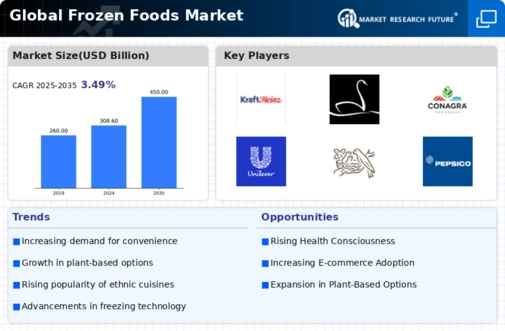
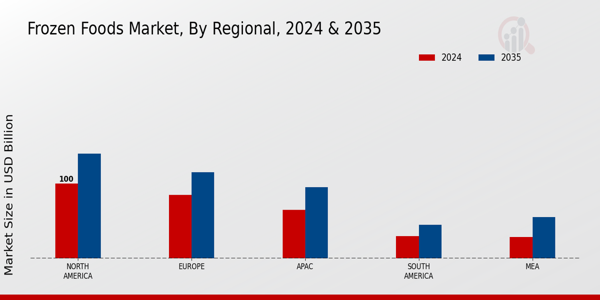
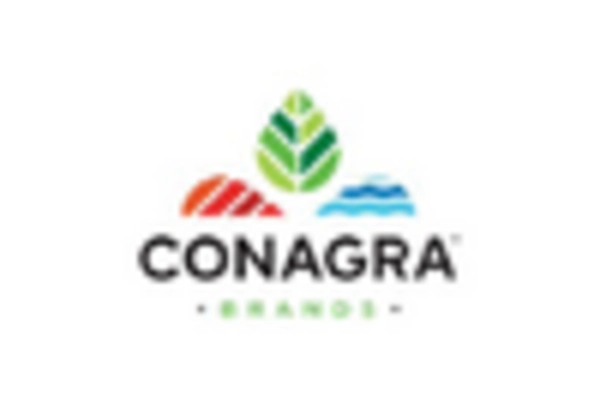

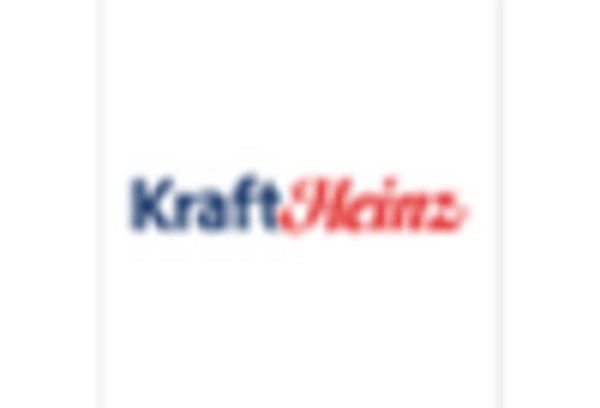

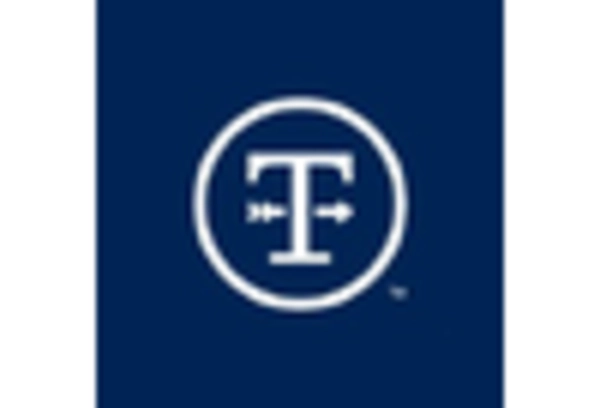


Leave a Comment